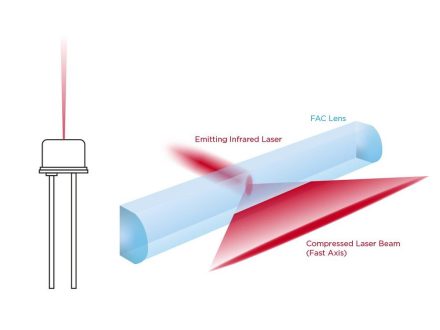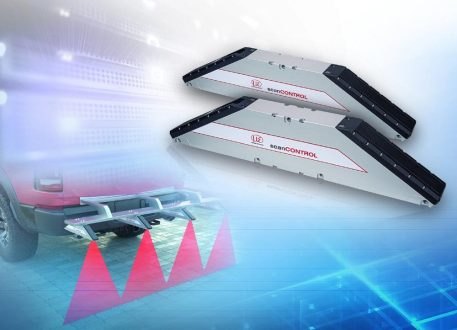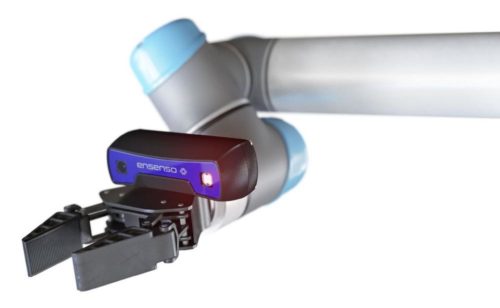XIMEA enables new insights with innovative UV camera technology
UV cameras function by capturing the UV light that objects reflect or emit. They employ specialized sensors or filters detecting and recording UV wavelengths. Unlike traditional cameras relying on visible light, UV cameras integrate components designed to prevent contamination from visible and infrared light sources, ensuring that captured images are primarily influenced by UV radiation.
With a spectral range extending from 200 to 400 nm, XIMEA’s MX081 model of UV camera captures UV radiation with exceptional sensitivity and accuracy. This specific wavelength range allows for the detection of subtle variations in UV reflectance and fluorescence, enabling enhanced analysis and visualization of target materials and substances. Equipped with a resolution of 8.1 megapixels (2856 x 2848 pixels), the camera delivers sharp, detailed images with precise pixel-level clarity.
UV cameras are beneficial in a widespread field of application. Naming:
Forensics and Crime Scene Analysis:
UV Wavelengths Required: 250-400 nm (UVA)
- Detection of bodily fluids, stains, and trace evidence that fluoresce under UV light
- Identifying hidden bloodstains, fingerprints, and other substances at crime scenes
- Differentiating between authentic and counterfeit documents
Material Inspection and Quality Control:
UV Wavelengths Required: 200-400 nm (UVC, UVB, UVA)
- Detecting cracks, defects, and contaminants in materials such as metals, glass, and plastics
- Identifying counterfeit currency, documents, and products
- Inspecting electronic components for flaws and irregularities
Biological and Medical Research:
UV Wavelengths Required: 260-350 nm (UVC, UVB)
- Studying DNA, proteins, and other biomolecules that fluoresce under UV light
- Analyzing cell structures, gene expression, and protein interactions
- Diagnosing skin disorders, detecting fungal infections, and identifying biological samples
Art Restoration and Conservation:
UV Wavelengths Required: 300-400 nm (UVA)
- Revealing hidden underdrawings, retouching, and alterations in paintings and historical artifacts
- Identifying aged varnishes, repairs, and surface inconsistencies in artworks
Environmental Studies:
UV Wavelengths Required: 300-400 nm (UVA)
- Monitoring air and water quality by detecting pollutants and contaminants that fluoresce
- Studying plant health, stress responses, and ecosystem dynamics
Entomology and Pest Control:
UV Wavelengths Required: 300-400 nm (UVA)
- Attracting insects and pests that are sensitive to UV light, aiding in their identification and control
- Monitoring and studying insect behavior, population dynamics, and disease transmission
Photolithography and Semiconductor Manufacturing:
UV Wavelengths Required: 200-400 nm (UVC, UVB, UVA)
- Enabling precise and intricate patterning of semiconductor wafers in photolithography processes
- Fabricating microchips, integrated circuits, and other semiconductor devices
With a frame rate of 59 frames per second (FPS), the MX081 camera enables smooth, real-time imaging of dynamic scenes and fast-moving objects. This high frame rate is ideal for applications requiring rapid image capture, such as machine vision, motion analysis, and quality control in manufacturing processes.
Measuring just 26 x 26 millimeters, it boasts a compact and lightweight design, making it versatile and easy to integrate into a wide range of systems and applications. Whether mounted on drones for aerial surveys, incorporated into handheld devices for field inspections, or installed in laboratory equipment for scientific research, XIMEA offers flexibility without compromising performance.
Finally, the MX081 features Sony’s IMX487 sensor, renowned for its superior image quality, low noise, and high sensitivity. The camera delivers exceptional performance and reliability, leveraging Sony’s advanced sensor technology, ensuring consistent results in demanding environments.
This extraordinary range of applications, the unmatched features of an UV camera and the broad fascination of scientists to laypeople suggests that the future promises even more evolutionary discoveries in the world of ultraviolet imaging.
Trendsetting high-performance cameras since 1992. Based in Münster (GER), XIMEA serves all types of tech companies around the world, from global players to small start-ups. Known as a reliable and professional innovator, developer, and distributor in the markets of industrial and scientific imaging. The product portfolio ranges from high-performance cameras, multi-camera systems to miniature cameras for demanding challenges in the field of machine vision. Especially compact formfactors, low latencies, and power consumption as well as super-fast interfaces and high resolutions are the core competencies. XIMEA´s camera technologies allow the customers to improve their products and to enable their applications. Facing challenges together with clients to solve individual needs with standard products and custom designs, is an essential philosophy of XIMEA. With more than 25 years of experience the engineers of XIMEA are constantly setting new standards for the entire industry through designing solutions for OEM-projects and OTS-products. Virtual reality, industrial, scientific, embedded applications and many other sectors benefit from these innovative cameras and software tools. The personal service approach is supposed to support system integrators and engineers to achieve highest effectivity.
XIMEA GmbH
Am Mittelhafen 16
48155 Münster
Telefon: +49 (251) 202408-0
Telefax: +49 (251) 202408-99
http://www.ximea.com
Marketing Manager
Telefon: +49 (251) 202408-31
E-Mail: henning.forst@ximea.com
![]()




